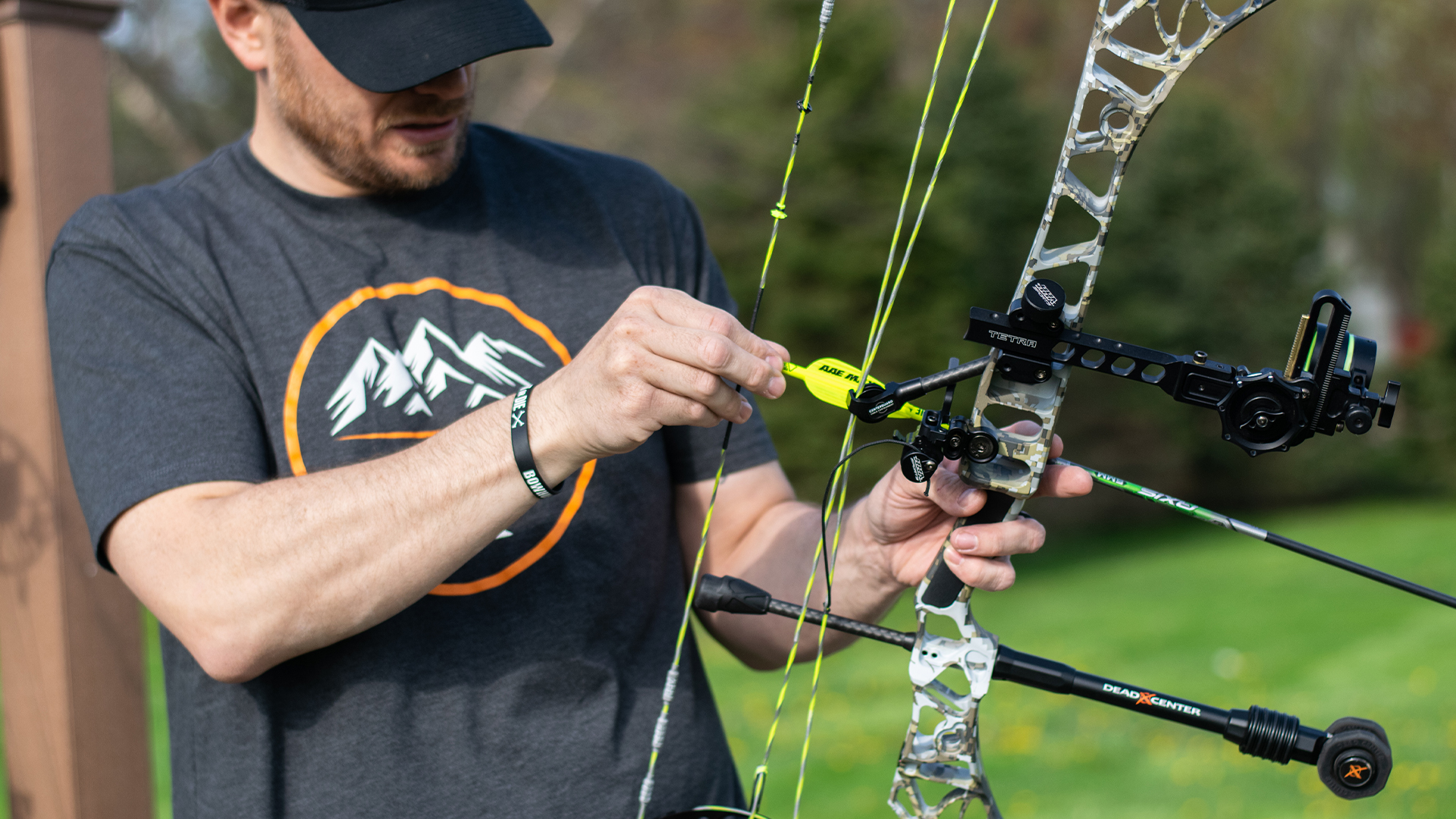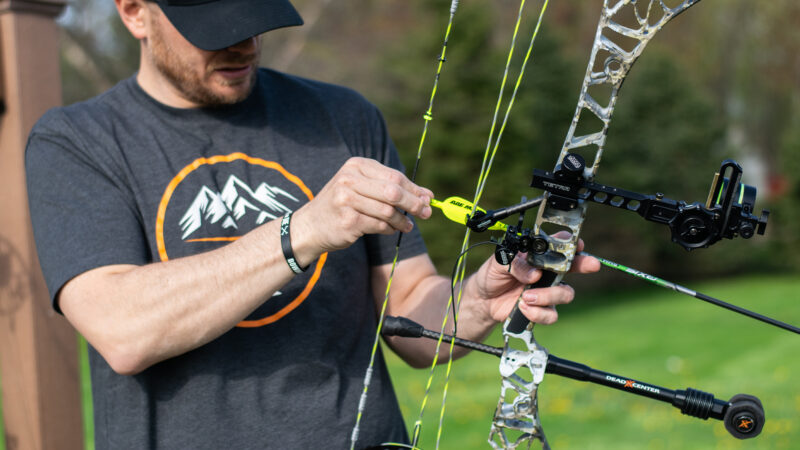35 Off-Season Chores for Deer Hunters


Scouting New Ground for Deer
Find New Public Ground
You know the old saying that you can’t have too much hunting land? It’s true. That’s why it’s crucial to continually be searching for new public ground, even if you already have several honey holes. You never know when things might change, and one or all of those spots won’t be what they once were.
Locate New Private Lands
Likewise, the same is true for private lands. While I’ve retained a lot of great places, I’ve lost access to a fair number of hunting spots I wish I still had. But that’s part of hunting. Properties sell. Leases expire. Habitat changes. Always be on the lookout for new private lands to hunt.
Study Your Hunting Lands
Oftentimes, we grow complacent when hunting a property for multiple seasons. We learn it well, and then stop doing so. The problem is that properties continue to change, and studying your hunting lands is a yearly necessity.
Talk to the Land Overseers
Whether it be private landowners or public land managers, stay in contact with those who manage or oversee tracts of land. They can clue you in to important things, such as access changes, deer sightings, property alterations, and more.
Mark the Bedding Areas, Food Sources, Water Sources, Etc.
Knowing a property as best as possible requires understanding how deer use each part of it. When walking and scouting a tract, mark the bedding areas, food sources, water sources, scrapes, rubs, crossings, and more, on a hunting app, such as HuntStand, or a physical map.
Scout for Relevant Sign
Finding relevant sign in the form of tracks, droppings, rubs, and scrapes, is part of the scouting process. Locate and mark these for future reference.

Preparation for Trails, Plots & Waterholes
Chart the Trail Networks
While walking the property and marking other important property elements, it’s good to chart the trail network, too. Do this by turning on your “Trace Path” feature in your hunting app and walk each trail. If you need to step off the trail, hit pause until you’re back on it again. Do this until all trails on the property appear on the app. This will help you better understand how deer navigate it.
Add Strategic Micro Food Plots
A good micro food plot can help tip the odds in your favor. Sometimes, we don’t already have a pre-existing canvas for these plots, though. It might require carving out an opening within cover. Now is the time to prep new food plots.
Prep for Existing Spring Food Plots
Even existing food plots need prep work. Some of that can be done now rather than later. Clearing debris, spraying weeds (conditions depending), hinge-cutting for screening cover, planting trees, and more. There’s much to be done.
Establish Strategic Water Sources
Placing a strategic water source close to a bedding area fringe, or even in a staging area, can encourage deer to come your way. Or, at least, it might pose for a shot opportunity.
Create Better Deer Habitat
Create Some Extra Incentives
You can never stop enhancing a property. Several ways to do this is adding extra incentives, such as bait stations, mineral licks, mock scrapes, and more (where legal, of course).
Conduct Some TSI
If you own or have permission to manage the land, conducting some timber stand improvement (TSI) can really boost its wildlife value. It’s best to bring in a qualified biologist or land consultant, though.
Make Other Habitat Improvements
Whatever it might be, most habitat improvements should take place during the off-season. Unless dictated by needing to be done during key windows, it’s best to make big land disturbances as far from deer season as possible.
Look into Conservation Programs
Some conservation programs are designed to benefit wildlife, the landscape, and landowners. Some merely offer access to a professional for advice. Others pay for land improvements. Still, some pay for improvements and deliver monthly or annual payments to the landowner in the form of conservation easement income.

How to Fine Tune the Best Spots for Your Buck
Track Some Snow Bucks
Deer season might be over, but a good post-season snow can help you learn the land. Following tracks is a good way to learn where deer are bedding, feeding, and more. It’s much easier to follow tracks in the snow.
Sit Down in Some Buck Beds
Did you find a well-used buck bed or two? Sit down and see what these bucks see while lying there. Maybe they can see you accessing or climbing into a treestand or blind. This can help you determine if access routes or stand locations need moving, if screening cover needs adding, and more.
Improve Your Treestand Locations
No matter how good your stand locations are, they can almost always use some tweaking. Improving your treestand locations might be as simple as turning the stand facing 20-30 degrees for better optimization, adding a bow hanger, replacing a lifeline, etc.
Maintain Your Treestands
It’s important to pull treestands each year and conduct regular maintenance. Like other gear, stands can fail. It’s crucial to maintain these and check for repairs and all-out replacements. Never use compromised or damaged gear.

Trim Important Shooting Lanes
For stand locations meant to be hunted after leaf drop next fall, now is a good time to trim shooting lanes. Of course, if you’ll be hunting spots before leaf fall, consider trimming those lanes later in the year when conditions are similar.
Find Hunter Sign
Unless owned or leased alone, rarely do hunters have a piece of hunting land all to themselves. Therefore, while I never advocate for walking near another hunter’s spot in-season, it’s important to see where other hunters are spending their time. The off-season is the ideal time to do that. Thus, you can make plans to avoid these areas next season.
Maintain Mineral Sites
Most mineral sites need regular refreshening to keep them going. That might be another application of mineral, or something else.
Conduct Post-Season Deer Population Surveys
The post-season is a great time to conduct deer population surveys. Whether with a trail camera, or with a thermal drone (where legal), it should be completed before green-up starts.

Off-Season Gear Prep for Hunters
Clean Up Your Trail Cams
Trail cameras only last as long as the care they are given allows for. During the off-season, pull trail cameras, remove old batteries, clean them up, and prep them for next season.
Silence Must-Be-Quiet Gear Items
Treestands used to dive deep into cover for hang-and-hunt missions, along with other gear items, should be silenced as best as possible. Usually, that requires applying stealth strips, replacing squeaky components, etc.
Replace Unrepairable Gear
Some gear just can’t be repaired. Everything needs replacing at some point, though. Replace unrepairable gear so you are less likely to need to deal with this issue during deer season.
Pour Over Past Season’s Data
Deer sightings, harvest logs, but especially trail camera data, are important. Study trail camera photos to see how deer used the land. Pay extra attention to trail camera photos of target bucks that are still alive.
Consider the Intel
Create Game Plans for Next Season
Using what you know about the landscape and trail camera intel for specific bucks, it’s possible to make tentative game plans for next season.
Consider Your Past Mistakes
No deer hunter is perfect. The best deer hunter in the country — whoever they might be — didn’t get there without making many mistakes. There are things you’ve been doing wrong but can immediately correct. So, reflect on yours, and don’t repeat those next season.
Improve Your Shortcomings
Similar but different, shortcomings should be observed, too. These are things that require practice to overcome, such as shooting skills, being stealthy, analyzing deer behavior, etc. Work on improving these things, too.

Go Find Some Fresh Sheds
Now is the best time to shed hunt. Finding that white gold is fun, but it can help determine what deer made it through deer season, too. It can even teach you about how they use the land, if sheds are discovered in bedding areas or food plots.
Keep Honing Your Craft
Shooting your bow, being stealthier while hunting, and more, are all part of the craft. Practice these things during the off-season.
Plan and Prepare for the Fall Season
Work on Your Muscles
I’m not one to follow the Mountain Ops mojo, but it doesn’t hurt to be in shape. Honestly, the stronger you are, the easier it is to carry gear quietly in the field. Or hike further in. Or get game back out. The list goes on. Muscles help.
Create a Reasonable Hunting Budget for Next Fall
Hunting can be inexpensive, if you want it to be. But it can get expensive rather quickly. So, create a reasonable hunting budget for next fall.
Set Your Sights Higher
Tired of shooting whatever caliber deer you’ve been going after? Add an age class and/or 10 inches of antler score and go for something bigger and/or older.
Personalize Your Off-Season Plans
A season is only as good as its planning. Personalize your off-season plans to optimize your deer hunting success next deer season.


